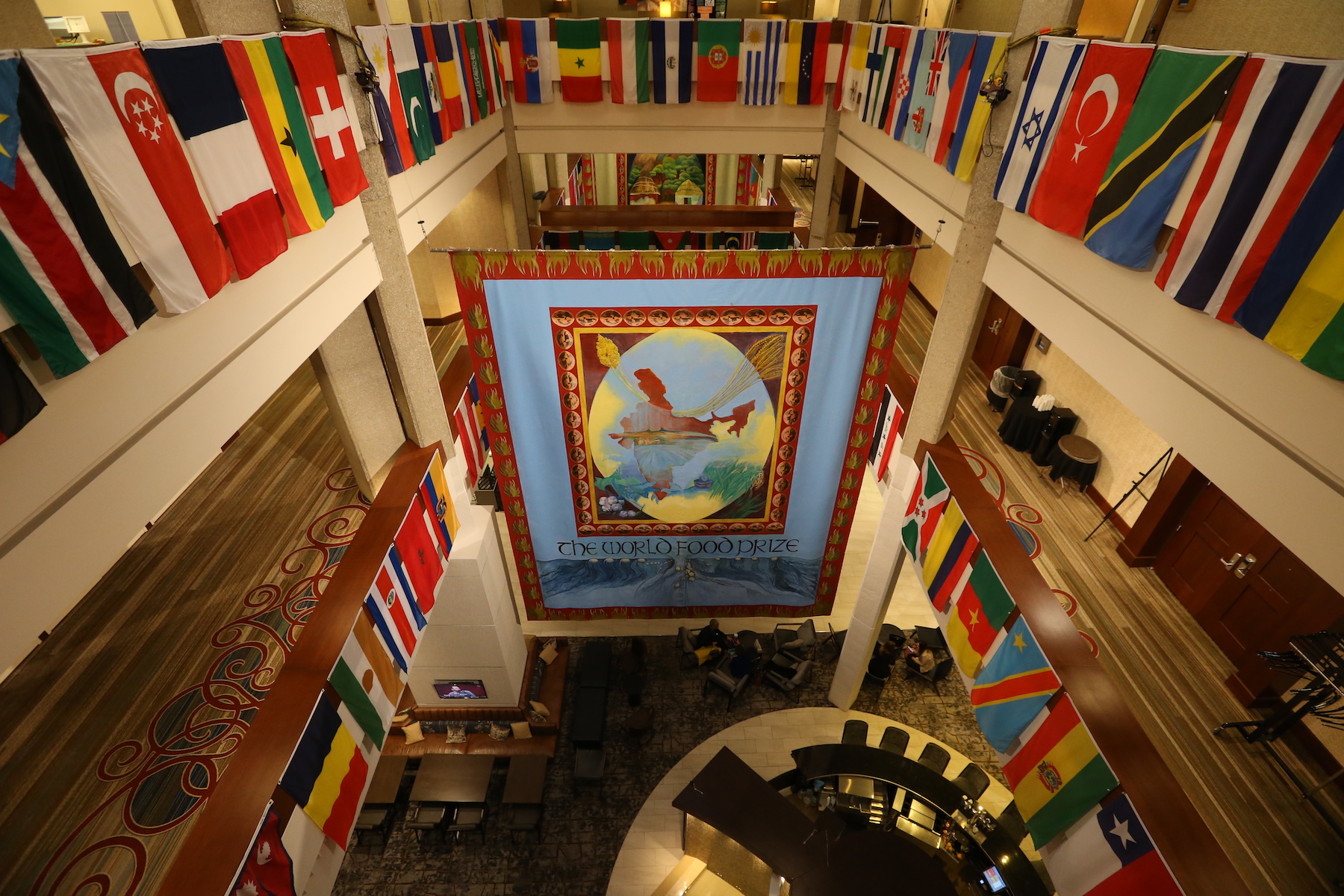DES MOINES (Iowa) — At the plenary of the 2018 Borlaug Dialogue, a global panel of experts gave an overview of the origins of the fall armyworm, how it is spreading around the world, and how governments, farmers and researchers are fighting against this pest.
Pedro Sanchez, research professor in tropical soils at the University of Florida and 2002 World Food Prize Laureate, shared background information on the history of the fall armyworm and the early attempts to neutralize it, decades ago. He pointed out that once-resistant varieties were eventually affected by this pest.
The Director General of the International Maize and Wheat Improvement Center (CIMMYT), Martin Kropff, shared the most recent developments and explained how organizations are working together to respond to this pest. “We want to have science-based, evidence-based solutions,” Kropff said. “We have to solve the problem based on science, and then to develop and validate and deploy integrated pest management technologies.”
The director general of the Ethiopian Institute of Agriculture, Mandefro Nigussie, reminded that in addition to affecting people and the environment, fall armyworm “is also affecting the future generation,” as children were pulled out of school to pick larvae.
The response against fall armyworm cannot be done by governments alone, panelists agreed. It requires the support of multiple actors: financing the research, producing research, promoting the results of the research and implementing appropriate measures.
Rob Bertram, chief scientist at USAID’s Bureau for Food Security predicted the fall armyworm will continue to be a “serious problem” as it moves and migrates.
The director general and CEO of the Kenya Agricultural & Livestock Research Organization, Eluid Kireger, emphasized the importance of global collaboration. “We need to borrow the technologies that are already working”.
The fall armyworm was also discussed during the Corteva Agriscience Forum side event, on a session on “Crop security for food security”. The Director of CIMMYT’s Global Maize Program and the CGIAR Research Program on Maize, B.M. Prasanna, was optimistic about the efforts to tackle this voracious pest. “I’m 100 percent confident that the pest will be overcome, but it requires very solid synergistic and coordinated actions at the national level, at the regional level and at the continental level.”
CIMMYT is co-leading the Fall Armyworm R4D International Consortium. “Fall armyworm is not going to be the only threat now and forever; there will be more insects, pests and pathogens moving around,” Prasanna said. “Global connectedness is exacerbating this kind of problem, but the solution lies also in global connectedness.”

 Nutrition, health and food security
Nutrition, health and food security 